Li Liang: How can the East and the West communicate and dialogue under the same starry sky?
China News Agency, Beijing, October 26th: Under the same starry sky, how can the East and the West carry out exchanges and dialogues?
- Interview with Li Liang, a researcher at the Institute of Natural Science History of the Chinese Academy of Sciences
Authors, Xu Jing, Du Yan

From ancient times to the present, the mysterious and magnificent vast starry sky has attracted the attention of different human civilizations on earth. "Chasing dreams and galaxies" is not only the romantic feelings of ordinary people, but also the pursuit of people’s careers for thousands of years. "The calendar is like the sun, moon and stars, and the time of the people is honored". People’s observation activities of the starry sky are closely related to production and life, resulting in a number of great inventions, which promote the development of science and technology.
Li Liang, a researcher at the Institute of Natural Science History of the Chinese Academy of Sciences, recently accepted an exclusive interview with China News Agency’s "East-West Question", tracing how human beings go from looking up at the starry sky to space step by step, telling how the East and the West communicate and dialogue around the same starry sky, explaining the role of "looking up at the starry sky" in promoting scientific progress and the development of civilization for thousands of years, and why human beings will continue their journey to the sea of stars to explore the boundless universe.
A summary of the interview is as follows:
China News Agency reporter: Why do humans observe the starry sky? When did astronomical records begin?
Li Liang:The history of humans looking up at the starry sky is very early, dating back thousands or even tens of thousands of years. Astronomical observations can be said to have originated from some of the most basic human questions, such as "who are we" and "where do we come from".
Archaeological evidence suggests that ancient Chinese astronomical observation activities date back at least to the Neolithic period. In the 1970s, a batch of Neolithic painted pottery with patterns of the sun, moon and stars was unearthed in Dahe Village, Zhengzhou, Henan Province, which was determined to be about 4,000 to 6,000 years ago. The discovery of the site of the Tao Temple Observatory in Shanxi Province confirms that there was an official observatory in China at least 4,000 years ago. It is currently one of the earliest observatories in the world discovered by archaeology.
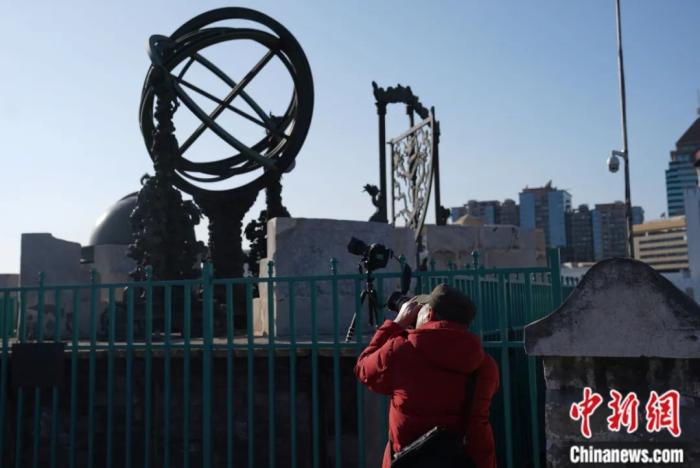
From the existing archaeological and historical data, it can be seen that since about the 8th century BC, humans have had a relatively systematic celestial record.
The magnificent starry sky has always attracted the attention of different human civilizations on earth, but only ancient Babylon, ancient China, and European and Arab civilizations after the Middle Ages have left a rich legacy of astronomical records. Especially after the decline of ancient Babylon, between 50 BC and 800 AD, China became almost the only country that has been diligent in observing and recording celestial phenomena for a long time. Most of the surviving celestial records from this period also came from China.
Astronomy has many applications and is a very useful science. From a modern perspective, the accuracy and complexity achieved by ancient astronomy far exceeded that of other ancient natural sciences.
China News Agency reporter: Why does the same starry sky form different constellations in the east and the west? Why is the star map called "the epitome of the world at that time"?
Li Liang:For thousands of years, people in different regions have looked up at the same starry sky, but have their own understanding and interpretation of the starry sky.
Almost every ancient civilization had its own constellation system. The modern constellation system we still use today originated in Mesopotamia 5,000 years ago. At that time, the Sumerians had learned how to use stars to distinguish time and season. Gradually, in order to facilitate memory, they connected different stars and imagined familiar patterns. This is the origin of constellations. Later, constellation observations here were further developed, spreading to the surrounding areas such as ancient Greece and ancient Egypt, and influencing the surrounding civilizations. In the 2nd century AD, the ancient Greek astronomer Ptolemy summed up 48 constellations on the basis of his predecessors. This is the basic prototype of the modern constellation system. It can be said that Western traditional constellations were produced on the basis of long-term mutual exchanges and integration of multiple civilizations, and are the crystallization of the wisdom of early agricultural and animal husbandry civilizations and maritime civilizations.
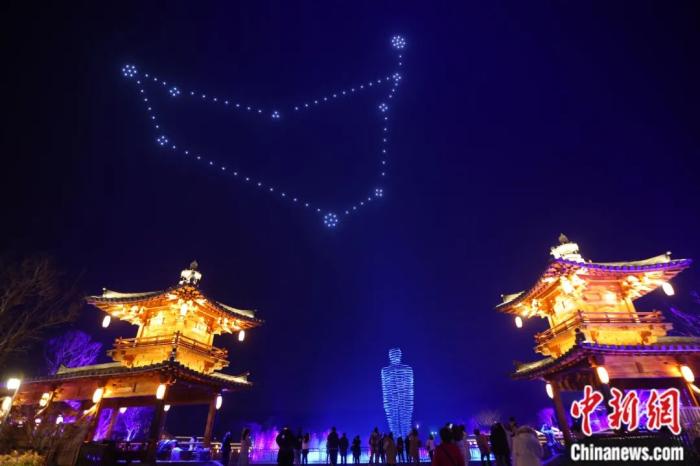
Among the four ancient civilizations, only the Chinese civilization has continued to this day. Ancient China had its own theoretical system for dividing and naming the sky, and the constellations were usually called "star officials". The star official system took shape at the latest in the Warring States period, which was composed of the North Star and the Big Dipper, as well as the twenty-eight constellations in the Yellow Equatorial Belt. During the Three Kingdoms period, Chen Zhuo further determined the star official system of 283 star officials and 1,464 stars, which became the standard for the star official system in ancient China in the future. In the late Ming and early Qing Dynasties, people added some constellations translated from the West, and eventually formed about 300 star officials.
Unlike traditional Western constellations, which are mainly based on myths and legends, the ancient Chinese star official system can be said to be a reflection of society and culture in the sky, with unique cultural connotations. When Zhang Heng described ancient star officials in the Eastern Han Dynasty, he believed: "In the wild elephants, in the court elephants, in officials, in people and things, so it is ready." Therefore, most of China’s star names are named after artifacts, official names, and personnel, and the sky has become a microcosm of all aspects of the ancient world, social systems, and humanistic customs.
In order to use and spread constellations, the ancients drew them on different materials, gradually forming the later star map. Star maps are not only a way for people to understand and record the starry sky, but also an important tool for studying and learning astronomy. They contain the infinite wisdom and imagination of human beings and are a microcosm of human exploration of the universe.
Star maps were also known as astronomical maps in ancient China. There were many types of star maps in ancient China, which were exquisitely and meticulously drawn. They were an important achievement of scientific civilization and were rare in world history.
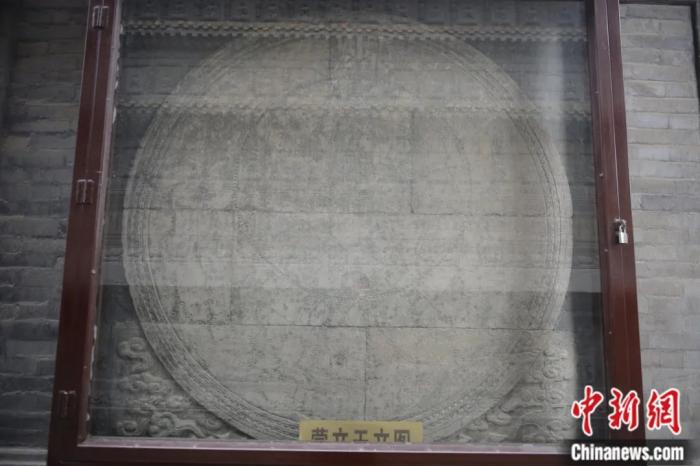
China News Agency: As an important part of science, has Chinese and foreign astronomy exchanged ideas and learned from each other in the process of development?
Li Liang:Astronomy has been a very important subject since ancient times. Among the four major sciences of heaven, arithmetic, agriculture and medicine in ancient China, astronomy was responsible for the important task of "chronicling the sun, moon and stars, and honoring the time of the people", which was closely related to production and life.
The astronomical calendar occupied a pivotal position in the political system of ancient China, and was even enshrined as an official "orthodox" school for a long time. Therefore, official institutions dedicated to observing celestial phenomena and compiling calendars emerged. This way of operation played a positive role in promoting the development of Chinese astronomy, making China a country where astronomical observation activities have never been interrupted among many ancient civilizations, thus leaving a rich astronomical heritage.
In his History of Science and Technology in China, Joseph Needham, a British historian of science, quoted Sutton and other historians of science: "From the Middle Ages until the end of the 14th century, there was no star map other than China."
The ancient Chinese star map spread to Japan and the Korean Peninsula, forming a unique astrological system shared by the entire East Asia region. It was also one of the important links for the dissemination of ancient science and culture. In addition, the Xuanming Calendar of the Tang Dynasty was used in Japan for 823 years, making it one of the longest-lived calendars in history. The official calendar of the Korean Sejong period (1418-1450), the "Seven Political Calculations", was compiled on the basis of the "Giving Time Calendar" of the Yuan Dynasty and the "Datong Calendar" of the Ming Dynasty.
It can be said that under the historical and social background of "books and texts", ancient China developed an "Eastern astronomy system" that was different from that of the West, and formed a strong cultural identity in East Asia and other regions. At the same time, the astronomical exchanges and exchanges among Eastern civilizations further promoted the formation and development of Eastern astronomy traditions.
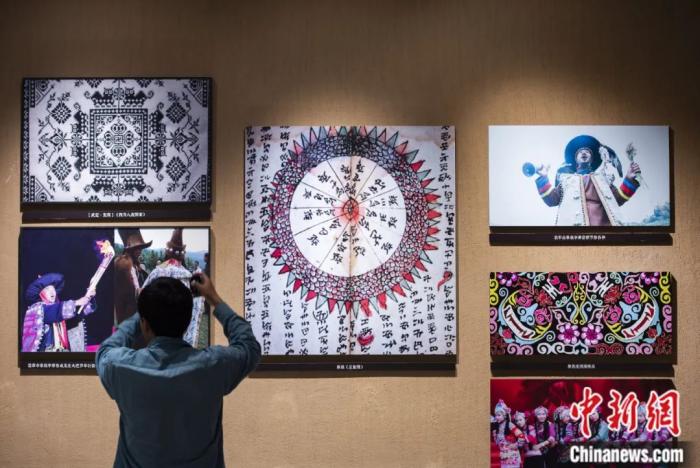
Civilizations are colorful because of exchanges, and civilizations are enriched because of mutual learning. In the course of the development of astronomy, China has its own continuous export and special contribution, and has always been a broad-minded and inclusive of all kinds of excellent foreign science and culture. China has also introduced astronomy knowledge from outside the region many times in history, three of which are relatively large. Liang Qichao pointed out in "The Academic History of China in the Near Three Hundred Years": "Arithmetic is very developed in China in ancient times, but it has been improved every time under the influence of foreign countries. The first is the Brahman method in the Tang Dynasty, the second is the Huihui method in the Yuan Dynasty, and the third is the Western method passed down by the Jesuits in the Ming and Qing Dynasties."
China News Agency reporter: What role does ancient Chinese astronomical records play today? What impact does the development of astronomy have on the development of human society?
Li Liang:Ancient China had made brilliant achievements in astronomical observation and accumulated a large amount of astronomical data. Needham once commented: "The Chinese astronomical records show that the Chinese were the most persistent and accurate astronomical observers in the world before the Arabs." "Modern astronomers have turned to these Chinese astronomical records on many occasions to obtain valuable results."
Among the objects of modern astronomy research, many are about the evolution of celestial bodies and the universe, and the time range involved is extremely long. The precious historical materials we have accumulated are of great value. For example, there are thousands of records of solar and lunar eclipses in ancient China, which are very valuable for studying the changes in the speed of the earth’s rotation. For example, ancient Chinese records of comets, novae and supernovae, as well as sunspots, played an irreplaceable role. In the 1950s, Xi Zezong, one of the pioneers of the history of Chinese science, published the "New Table of Ancient Novae", which took full advantage of the great superiority of ancient China in complete, continuous and accurate astronomical observation data, and recorded the record of nova and supernova explosions in Chinese history, which won a reputation for the history of Chinese astronomy, the history of science and even the Chinese people.
No matter in ancient times or modern times, astronomy is the "vanguard" of scientific development. The countless questions that humans look up at the starry sky have not only promoted the development of astronomy, but also promoted the development of science and technology and civilization.
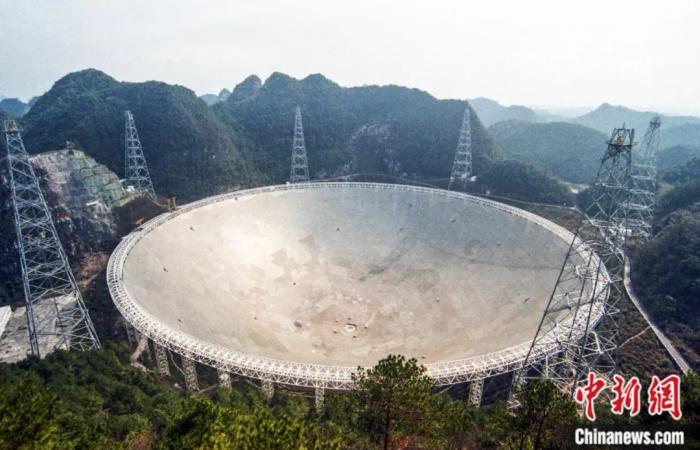
In recent years, a number of new achievements have emerged in Chinese astronomy: the "Guo Shoujing Telescope" has helped reveal more mysteries about the Milky Way, and the "China Sky Eye" has played an important role in neutral hydrogen universe research, pulsar search and physics research. Currently, the China Sky Survey Space Telescope, the "Taiji Project", and the Square Kilometer Array Radio Telescope are advancing.
Once upon a time, "Yi invited the medicine of immortality to the Queen Mother of the West, and Huo’e stole it to fly to the moon." Today, the moon has become an important exploration target in China’s aerospace field, with a very romantic name – "Chang’e Project"; once, Qu Yuan used a series of questions in "Tianwen" to ask and think about the origin of the entire universe. Now, the "Tianwen 1" probe and the "Zhurong" rover are providing important scientific basis for in-depth understanding of Mars; once, "Kuafu exceeded his strength and wanted to chase the sun." Now, China’s comprehensive solar exploration satellite "Kuafu 1" has been launched into space, starting a journey to explore the sun.
The above results demonstrate that some of the major developments China has made in the fields of astronomy and aerospace have reached the international advanced or leading level.
There are still many unsolved mysteries in the universe waiting to be explored. In distant places, there are pioneers of human civilization who represent the curiosity of human civilization and move forward all the way. In the future, China and other countries in the world will face the same sea of stars and trace the origin of mankind and the universe through the joint efforts of generations. (End)
Interviewee profile:

Li Liang is a researcher at the Institute of Natural Science History of the Chinese Academy of Sciences, and deputy director of the Research Office of Ancient Science and Technology History. Editorial board member of the English journal Journal for the History of Astronomy and the Chinese journal Journal of Chinese Science and Technology History, and a member of the "Youth Innovation Promotion Association" of the Chinese Academy of Sciences. He is the author of "Research on the Unified Calendar", "Splendid Galaxy: Ancient Chinese Star Map", "Rise and Fall of the Ancient Calendar – Calendar and the Unified Calendar", and translations of "4000 Years of Chinese Astronomical History". He has published more than 40 academic papers in Chinese and English, and has presided over projects such as the National Natural Science Foundation of China and the National Social Science Foundation. He has won awards such as the Dean’s Award of the Chinese Academy of Sciences and the "Doctoral Academic Newcomer Award" of the Ministry of Education. He has also published popular science works such as "Theory of Celestial Movement (Children’s Painted Edition) " "Astronomical Observation, Sun, Moon and Stars" "Sky Territory: Stories in the Star Map" and "A Brief History of Ancient Chinese Science and Technology for Children (Astronomical Volume) ".